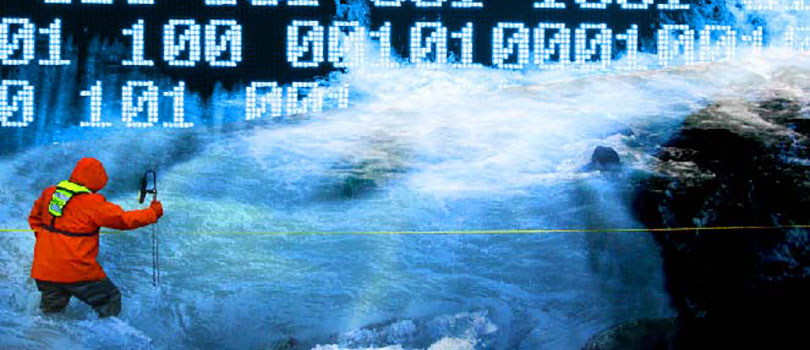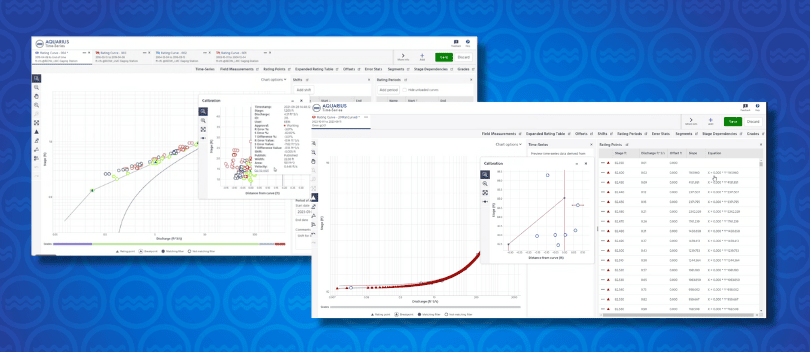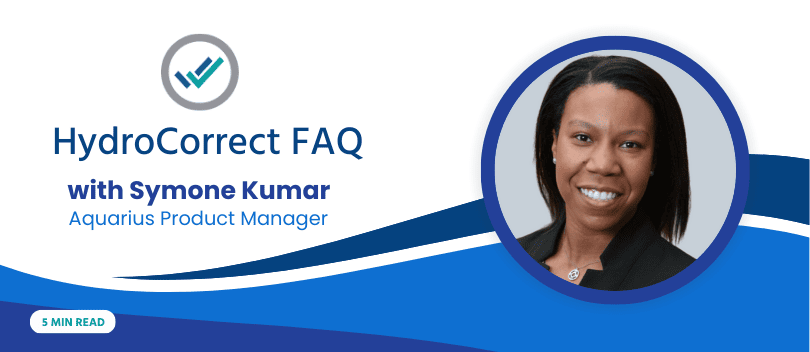
Real or Not? Discharge as a Virtual Variable
Discharge is such a great variable
It is so rich in information about everything that has happened upstream and so informative about what will be happening downstream. The dynamics of streamflow are tightly linked to both ecosystem function and economic viability.
If only discharge data were real.
Beven and Westerberg (2011) argue that “some periods of hydrological data are disinformative in trying to make models as hypotheses about catchment response…”. It is difficult to counter this argument in light of studies such as Jonsson et al. (2002). Two gauging stations in each of five Nordic countries were selected and all relevant information shared. Hydrographers in each country then established rating curves on all ten locations and converted all of the water levels to discharge. The five countries differed, primarily, in methods for how many segments are allowed and how one deals with different time periods and how to extrapolate to higher stage. Not surprisingly, they found that the different practices for segmentation have high influence on extrapolation to the extreme values. Very surprisingly, they found substantial differences even in long term averages with differences ranging from 0.5 to 20%.
In my experience, many stream hydrographers ignore relevant information from field observations that would constrain the solution for a rating curve. In the absence of such constraints, a least squares regression will almost always be wrong because the assumption that errors in the x, y coordinate positions of the measurements are identical and identically distributed (IID) is invariably invalid. Curve over-fitting occurs when errors of high leverage measurements have an undue influence the result. Measurements have high leverage on curve fitting when they are inadequately supported by independent measurements within the same range of stage. This is most typical at the extremes of the curve, where measurement conditions are often particularly adverse resulting in relatively high uncertainty.
In other words, the measurements that have the greatest uncertainty often have the most influence on curve extrapolation.
It isn’t just measurement uncertainty that needs to be considered. Curve under-fitting occurs when breaks in channel geometry are ignored resulting in a violation of the assumption of homoscedasticity. The relevance of the measurements with respect to the control condition for which the curve is being prepared also needs to be carefully evaluated. Small sample sizes within a selected period of applicability and within a curve segment further confound resolution of the curve by statistical methods.
It is my, strongly held, opinion that well-trained stream hydrographers, using an evidence-based approach, are capable of converging on a unique solution for any stage discharge relation.
To borrow from Sherlock Holmes: “when you have eliminated the impossible, whatever remains, however improbable, must be the truth”.
With respect to rating curves, I would argue that “whatever remains” is, in fact, a very close approximation of the truth and therefore highly probable.
Why should the difference in methods for curve segmentation in different agencies matter?
A well-trained hydrographer will put a break-point in the rating where there is substantive physical evidence that a break-point makes sense. Furthermore, a well-trained hydrographer will make sure that field observations about the control conditions are well documented and available for investigative analysis.
The reality is that almost anyone is allowed to connect the dots on a scatter plot of stage and discharge measurements. Most National Hydrometric Programs have their own internal training and accreditation systems but there is no universal agreement on how the training should be done. I fear that, behind the closed doors of internal training courses, the notion of a rating curve as the least squares regression on x, y coordinates is being perpetuated.
Beven et al. 2012 argue that the emperor has no clothes; discharge is just a virtual variable and hence not deserving of the trust put in it for hydrological inference. Clearly, we must do better to deserve the trust the entire world has in our ability to provide necessary water resources information.
We need to establish best practices for hydrometric training and we need to monitor that training with formal, internationally recognized, hydrometric accreditation.
Thanks to Keith Beven we now know why but what does that look like? Who should be the ultimate authority? How can this be implemented? When can this be achieved?
Tell me what you think...
Beven, K., W. Buytaert and L.A. Smith. 2012. On virtual observatories and modeled realities (or why discharge must be treated as a virtual variable). Hydrol. Processes. doi 10.1002/hyp.9261
Beven, K. and I. Westerberg. 2011. On red herrings and real herrings: disinformation and information in hydrological inference. Hydrol. Process. 25, 1676-1680.
Jonsson, P., A. Petersen-Overleir, E. Nilsson, M. Edstrom, H.L. Iversen and H. Sirvio. 2002. Methodological and personal uncertainties in the establishment of rating curves. Nordic Hydrological Programme NHP Report # 47. XXII Nordic Hydrological Conference, Nordic Ass. For Hydrology. Roros, Norway. 4-7 August, 2002.


